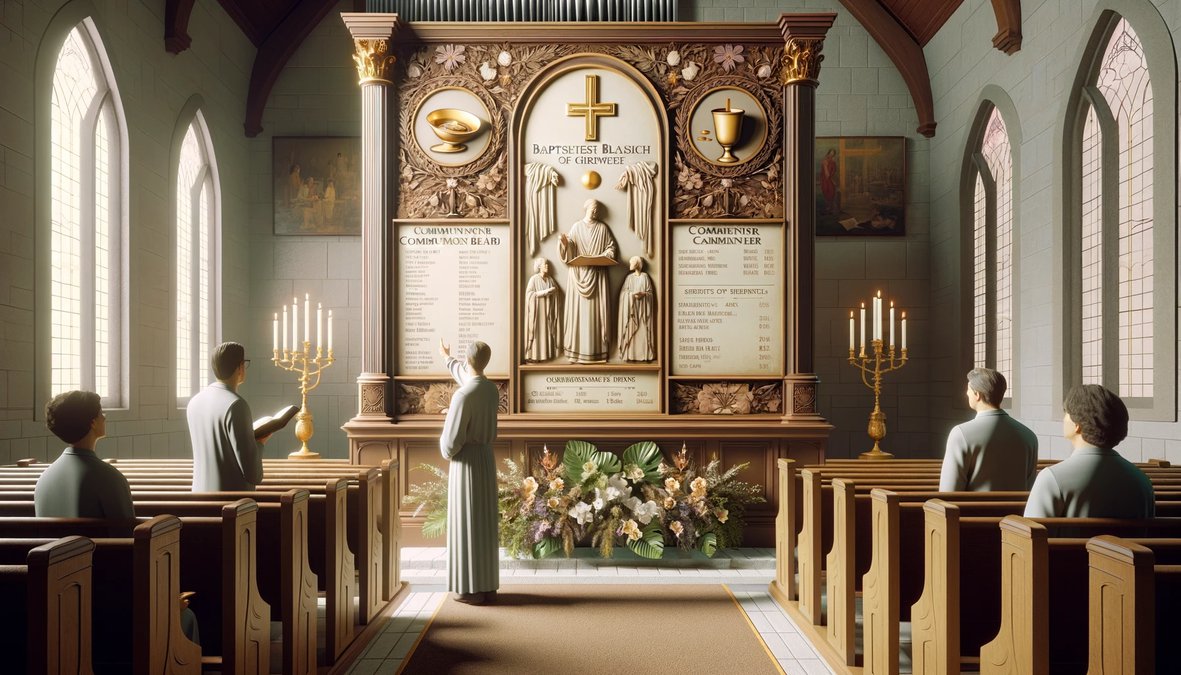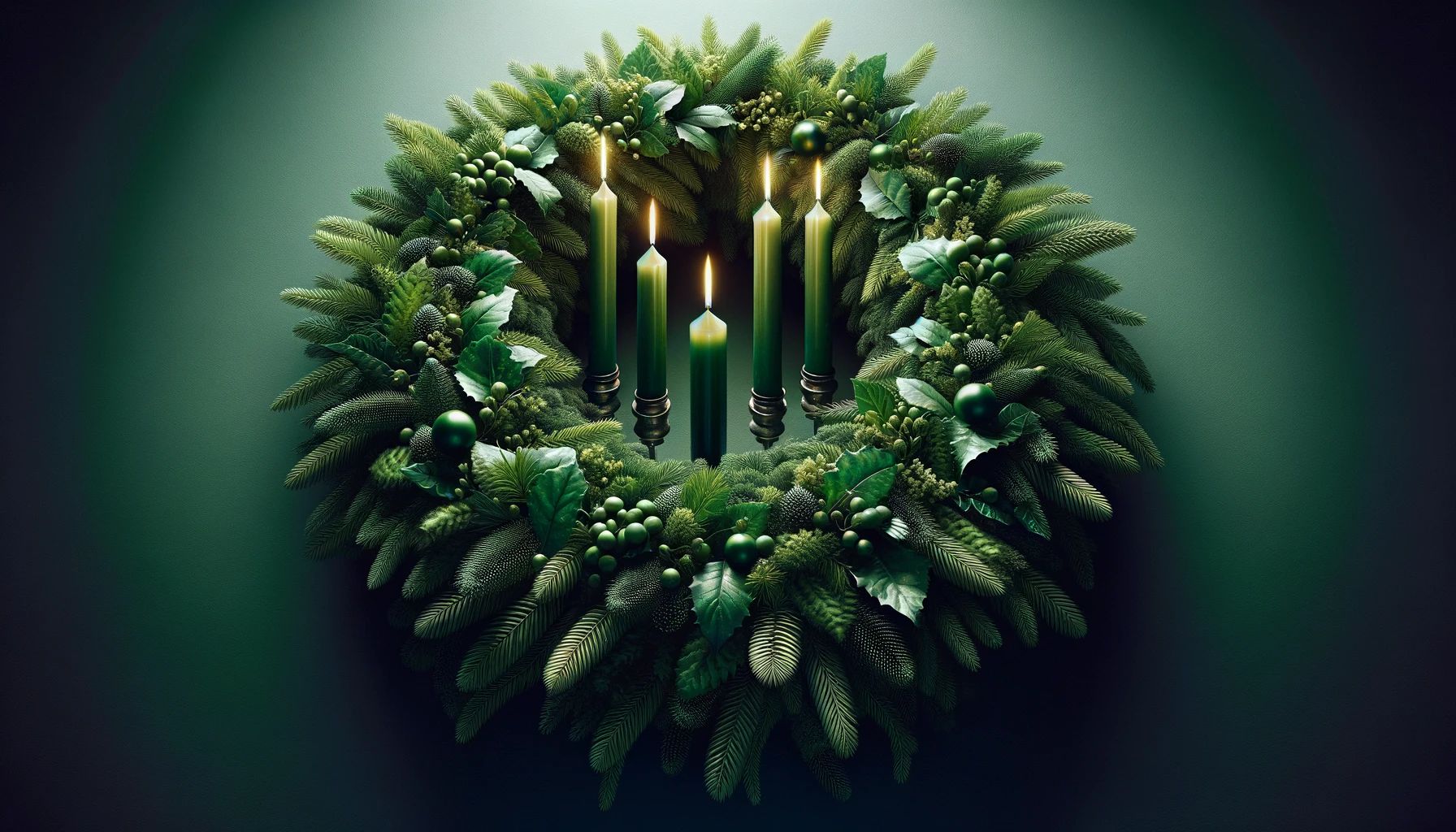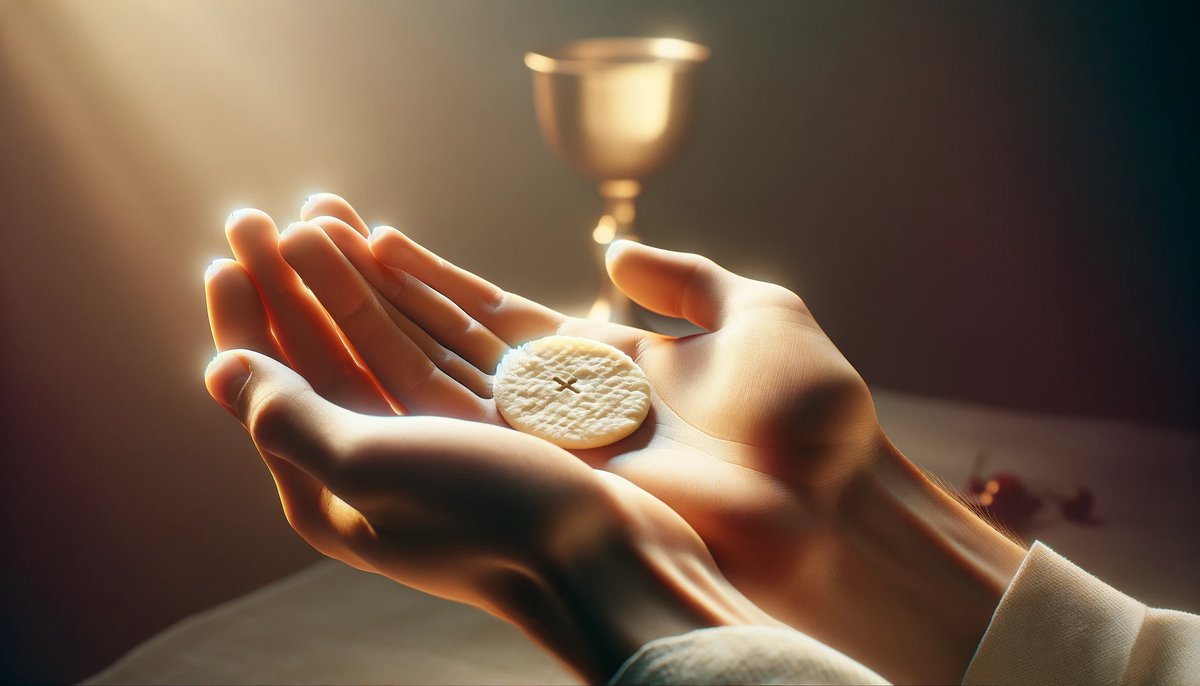Home>Special Themes>When Do You Take Down The Advent Wreath


Special Themes
When Do You Take Down The Advent Wreath
Published: February 14, 2024
Peter Smith, Editorial Director at Christian.net, combines deep insights into faith, politics, and culture to lead content creation that resonates widely. Awarded for his contributions to religious discourse, he previously headed a major organization for religious communicators, enhancing dialogue on faith's societal impacts.
Learn about the tradition of taking down the Advent wreath and its significance in special themes celebrations. Find out the best time to remove the Advent wreath.
(Many of the links in this article redirect to a specific reviewed product. Your purchase of these products through affiliate links helps to generate commission for Christian.net, at no extra cost. Learn more)
Table of Contents
Introduction
The Advent season is a time of joyful anticipation and spiritual preparation for the celebration of Christmas. At the heart of this cherished tradition is the Advent wreath, a symbol of hope, peace, joy, and love. As families and communities come together to mark the weeks leading up to Christmas, the Advent wreath serves as a focal point for reflection, prayer, and meaningful rituals.
The significance of the Advent wreath stretches back through the centuries, rooted in the rich tapestry of Christian traditions. Its circular shape represents eternity and the unending love of God, while the evergreen foliage symbolizes the enduring nature of faith. Each element of the wreath holds deep symbolism, from the flickering candles to the vibrant colors, all of which contribute to the profound spiritual journey of Advent.
As we delve into the timeless customs and practices associated with the Advent wreath, we will explore the optimal times for its placement and removal, as well as alternative ways to honor its symbolism beyond the Advent season. Join us on this enlightening exploration of the Advent wreath, as we uncover the traditions, meanings, and enduring relevance of this cherished symbol of faith and hope.
Read more: What Do You Do With An Advent Wreath
The Tradition of the Advent Wreath
The Advent wreath has a rich and storied history, deeply intertwined with the customs and observances of the Advent season. Its origins can be traced back to the early 19th century in Germany, where Lutherans crafted the first Advent wreaths as a tangible representation of the anticipation and preparation for the birth of Christ. Over time, this tradition spread throughout Europe and eventually made its way to other parts of the world, becoming a beloved symbol of the Advent season for Christians of various denominations.
The circular shape of the Advent wreath holds profound significance, representing the eternal nature of God and the unending cycle of the liturgical year. Traditionally, the wreath is crafted from evergreen foliage, symbolizing the enduring nature of faith and the hope that springs eternal. The vibrant greenery serves as a poignant reminder of the everlasting life found in Christ, even amidst the winter's chill.
Central to the Advent wreath are the four candles, typically three purple and one pink, arranged around the wreath with a fifth white candle placed in the center. Each candle holds its own symbolic meaning, representing the themes of hope, peace, joy, and love, respectively. As the weeks of Advent progress, these candles are lit in succession, illuminating the path towards the celebration of Christ's birth.
The lighting of the Advent candles is accompanied by prayers, readings, and reflections, creating a sacred space for contemplation and spiritual growth. Families and communities gather around the Advent wreath, fostering a sense of unity and shared devotion as they mark the passage of time leading up to Christmas.
In addition to its spiritual significance, the Advent wreath also serves as a visual reminder of the broader themes of Advent, encouraging believers to embrace a spirit of anticipation, repentance, and joyful expectation. Its presence in homes, churches, and communal spaces fosters a sense of connection to the wider Christian community, uniting individuals in a shared journey of faith and devotion.
As we delve deeper into the traditions and symbolism of the Advent wreath, we gain a deeper appreciation for its enduring relevance and the profound impact it continues to have on the hearts and minds of believers around the world.
When to Put Up the Advent Wreath
The timing of putting up the Advent wreath is deeply intertwined with the essence of the Advent season, marking the beginning of this sacred period of anticipation and spiritual preparation. Traditionally, the Advent wreath is set up on the fourth Sunday before Christmas, which also signifies the start of the liturgical year in many Christian traditions. This day, known as the first Sunday of Advent, serves as a poignant reminder of the imminent arrival of Christmas and the birth of Christ.
As families and communities gather to mark the commencement of Advent, the act of placing the Advent wreath in a prominent location within the home or church holds profound significance. It signals the start of a period of reflection, prayer, and joyful expectation, setting the stage for the spiritual journey that lies ahead. The wreath, with its evergreen foliage and unlit candles, serves as a visual representation of the hope and anticipation that permeate the Advent season.
The act of putting up the Advent wreath is often accompanied by meaningful rituals and prayers, symbolizing the transition into a time of spiritual renewal and preparation. Families may come together to adorn the wreath with the traditional candles, each representing a specific theme of Advent, and engage in readings or devotions that mark the beginning of this sacred season.
The placement of the Advent wreath in a central location within the home or church serves as a focal point for communal gatherings and shared moments of reflection. Its presence becomes a visual reminder of the spiritual significance of the season, prompting individuals to embrace a spirit of anticipation and prepare their hearts for the celebration of Christ's birth.
By adhering to the tradition of putting up the Advent wreath on the first Sunday of Advent, believers embark on a collective journey of faith and devotion, united in their shared observance of this sacred season. The act of setting up the Advent wreath becomes a tangible expression of the timeless customs and enduring significance of the Advent season, laying the groundwork for a period of spiritual growth, contemplation, and joyful anticipation.
As the Advent wreath takes its place in homes and churches, it heralds the beginning of a season filled with hope, peace, joy, and love, inviting individuals to immerse themselves in the timeless traditions and profound symbolism that define the Advent experience.
When to Take Down the Advent Wreath
As the Christmas season culminates in the joyous celebration of Christ's birth, the question of when to take down the Advent wreath arises. The timing of removing the Advent wreath is a reflection of the culmination of the Advent season and the transition into the Christmas festivities. Traditionally, the Advent wreath is taken down after the final candle, often the white candle at the center, is lit on Christmas Eve or Christmas Day.
The act of taking down the Advent wreath symbolizes the completion of the Advent season and the fullness of the Christmas celebration. It marks a transition from the anticipation and preparation of Advent to the joyous commemoration of Christ's birth. The removal of the Advent wreath is often accompanied by prayers, reflections, and expressions of gratitude for the spiritual journey undertaken during the Advent season.
For many families and communities, the act of taking down the Advent wreath becomes a meaningful ritual, signifying the culmination of a period of spiritual growth and reflection. It serves as a poignant reminder of the transformative nature of the Advent season and the profound impact it has had on individuals and communities. The removal of the Advent wreath also paves the way for the continuation of Christmas traditions and celebrations, as believers shift their focus towards the joy and festivity of the Christmas season.
While the specific date for taking down the Advent wreath may vary based on individual customs and traditions, the underlying significance remains consistent. It represents a symbolic transition from the introspective and contemplative nature of Advent to the jubilant and celebratory spirit of Christmas. The act of taking down the Advent wreath serves as a tangible expression of the seamless flow between these two distinct yet interconnected seasons within the Christian liturgical calendar.
As the Advent wreath is carefully stored away for the following year, its removal becomes a moment of reflection and gratitude for the spiritual journey it has facilitated. The enduring symbolism of the Advent wreath continues to resonate, even as it is temporarily set aside, serving as a timeless reminder of the hope, peace, joy, and love that define the Advent season.
In essence, the act of taking down the Advent wreath is a testament to the enduring impact of this cherished tradition and the seamless transition from the anticipation of Advent to the jubilation of Christmas.
Alternative Uses for the Advent Wreath
Beyond its traditional role in marking the weeks of Advent, the Advent wreath holds the potential for alternative uses that extend its symbolism and significance throughout the year. While the Advent season remains the focal point for the wreath's primary purpose, there are creative and meaningful ways to incorporate this cherished symbol into other aspects of spiritual life and communal gatherings.
One alternative use for the Advent wreath is to repurpose it as a centerpiece for special occasions and gatherings. The timeless beauty and symbolic richness of the wreath make it a captivating focal point for events such as weddings, baptisms, and other significant celebrations within the Christian community. By adorning the wreath with seasonal flowers, ribbons, or decorative elements that align with the theme of the occasion, it can serve as a poignant reminder of the enduring hope, peace, joy, and love that are central to the Christian faith.
Additionally, the Advent wreath can be utilized as a centerpiece for prayer vigils, retreats, and communal gatherings throughout the year. Its presence can serve as a visual anchor, fostering a sense of spiritual connection and contemplation during these sacred gatherings. The lighting of the candles, accompanied by relevant readings or reflections, can infuse these events with a profound sense of reverence and unity, drawing upon the enduring symbolism of the Advent season to inspire and uplift participants.
Furthermore, the Advent wreath can be repurposed as a focal point for family devotions and prayer rituals beyond the Advent season. By incorporating the lighting of the candles into regular family prayer times or devotional practices, the wreath becomes a tangible expression of faith and spiritual growth throughout the year. Its presence in the home serves as a constant reminder of the enduring themes of hope, peace, joy, and love, inviting families to embrace these virtues in their daily lives.
In essence, the alternative uses for the Advent wreath extend its symbolism beyond the confines of the Advent season, infusing various aspects of communal and spiritual life with its timeless significance. By creatively repurposing the wreath for special occasions, gatherings, and family devotions, its enduring symbolism continues to inspire and uplift individuals and communities throughout the year.
Conclusion
In conclusion, the Advent wreath stands as a timeless symbol of hope, peace, joy, and love, deeply intertwined with the traditions and observances of the Advent season. Its circular form, adorned with evergreen foliage and flickering candles, serves as a visual representation of the spiritual journey undertaken during the weeks leading up to Christmas. From its origins in 19th-century Germany to its widespread adoption across various Christian denominations, the Advent wreath continues to hold profound significance for believers around the world.
The act of putting up the Advent wreath on the first Sunday of Advent marks the commencement of a period of joyful anticipation and spiritual preparation. Families and communities come together to engage in meaningful rituals, prayers, and reflections, setting the stage for a collective journey of faith and devotion. As the candles are lit in succession, the Advent wreath becomes a focal point for communal gatherings, fostering a sense of unity and shared devotion as believers mark the passage of time leading up to Christmas.
The question of when to take down the Advent wreath is a reflection of the culmination of the Advent season and the transition into the Christmas festivities. Traditionally removed after the final candle is lit on Christmas Eve or Christmas Day, the act of taking down the Advent wreath symbolizes the completion of a period of spiritual growth and reflection. It paves the way for the continuation of Christmas traditions and celebrations, as believers shift their focus towards the joy and festivity of the Christmas season.
Beyond its traditional role in marking the weeks of Advent, the Advent wreath holds the potential for alternative uses that extend its symbolism and significance throughout the year. Whether repurposed as a centerpiece for special occasions, a focal point for prayer vigils, or a centerpiece for family devotions, the enduring symbolism of the Advent wreath continues to inspire and uplift individuals and communities beyond the confines of the Advent season.
In essence, the Advent wreath serves as a timeless reminder of the enduring themes of hope, peace, joy, and love that define the Advent season. Its presence in homes, churches, and communal spaces fosters a sense of connection to the wider Christian community, uniting individuals in a shared journey of faith and devotion. As we embrace the traditions, meanings, and enduring relevance of the Advent wreath, we are reminded of the profound impact it continues to have on the hearts and minds of believers around the world.














